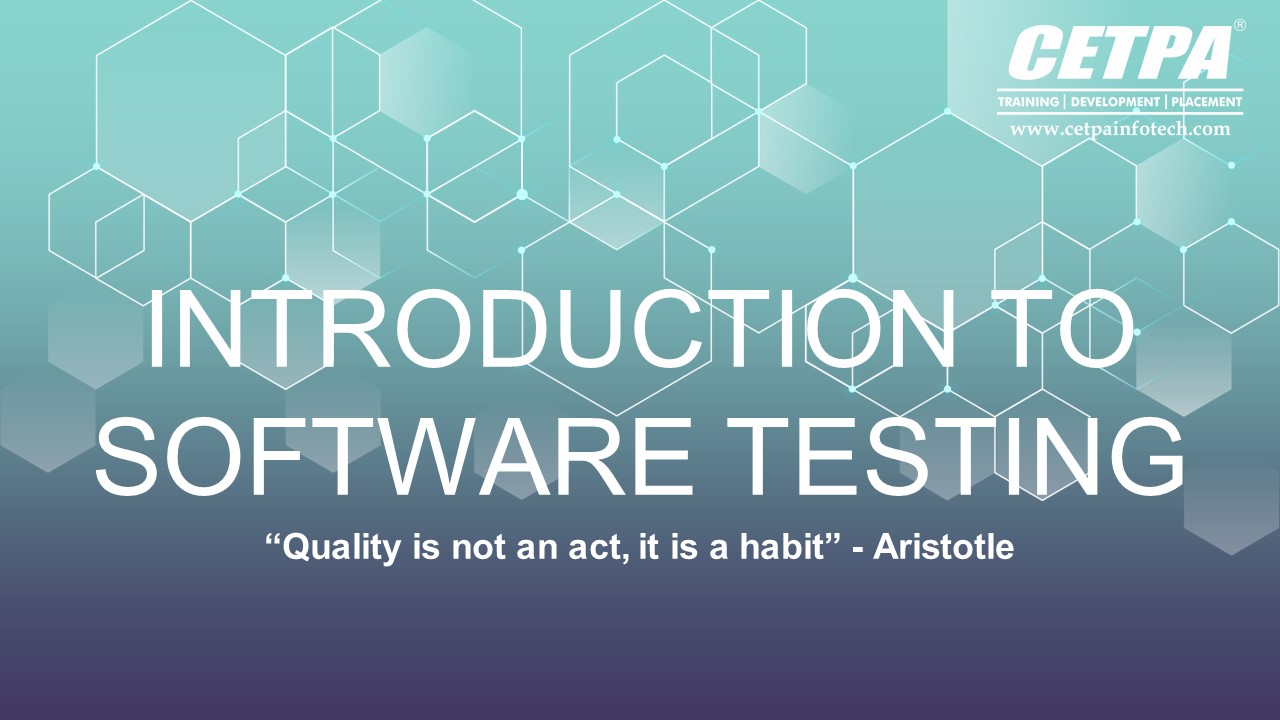Things You Need To Know About Software Testing PowerPoint PPT Presentation
Title: Things You Need To Know About Software Testing
1
INTRODUCTION TO
SOFTWARE TESTING
- Quality is not an act, it is a habit - Aristotle
2
CONTENTS OF THIS PRESENTATION
- WHAT IS SOFTWARE TESTING ?
- WHY IS SOFTWARE TESTING IMPORTANT ?
- TYPES OF SOFTWARE TESTING
- SOFTWARE TESTING METHODS
- BRIEF EXPLANATION ABOUT SOFTWARE TESTING
3
WHAT IS SOFTWARE TESTING ?
- Software is a set of instructions or programs
that tell a computer what to do. It can be
divided into two main categories ie., system
software and application software. - Testing is the process of determining how
effective something is. - Software testing is a process, to evaluate the
functionality of a software application with an
intent to find whether the developed software met
the specified requirements or not and to identify
the defects to ensure that the product is
defect-free in order to produce a quality product.
4
OFFERS PREREQUISITE AND PERFECT USER EXPERIENCE
HELPS IN SAVING MONEY AND DETERMINING QUALITY OF
PRODUCT
HELPS IN DETERMINING THE PERFORMANCE OF SOFTWARE
HELPS IN ENHANCING THE PROCESS OF DEVELOPMENT
WHY IS SOFTWARE TESTING SO IMPORTANT?
01
03
02
04
5
TO AVOID EXTRA COSTS AND RISKS
TO IDENTIFY ERRORS AND CHECK SOFTWARE ADAPTIBILiTY
TO ACCELERATE SOFTWARE DEVELOPMENT
TO OPTIMISE BUSINESSES AND GAIN CUSTOMER
CONFIDENCE
WHY IS SOFTWARE TESTING SO IMPORTANT?
05
07
06
08
6
Software Testers do not make software, they only
make them better
7
TYPES OF SOFTWARE TESTING
3
1
2
- NON FUNCTIONAL TESTING OR PERFORMANCE TESTING
- FUNCTIONAL TESTING
- MAINTENANCE (REGRESSION MAINTENANCE)
8
TESTING
METHODS
STATIC TESTING
DYNAMIC TESTING
- It is also known as Verification in Software
Testing. Verification is the process, to ensure
that whether we are building the product right
i.e., to verify the requirements which we have
and to verify whether we are developing the
product accordingly or not.
- It is also known as Validation in Software
Testing. - Validation is a dynamic process of testing the
real product. - Validation is the process, whether we are
building the right product i.e., to validate the
product which we have developed is right or not.
9
BRIEF EXPLANATION ABOUT SOFTWARE TESTING
- Software testing is the process of verifying a
system with the purpose of identifying any
errors, gaps or missing requirement versus the
actual requirement. Software testing is broadly
categorised into two types - functional testing
and non-functional testing. - When to start test activities Testing should be
started as early as possible to reduce the cost
and time to rework and produce software that is
bug-free so that it can be delivered to the
client. However, in Software Development Life
Cycle (SDLC), testing can be started from the
Requirements Gathering phase and continued till
the software is out there in productions. It also
depends on the development model that is being
used. For example, in the Waterfall model,
testing starts from the testing phase which is
quite below in the tree, but in the V-model,
testing is performed parallel to the development
phase. - Testing deadlines
- Completion of test case execution cycle
- Completion of functional testing and code
coverage to an agreed limit - No high-priority bug is found and the rate of
finding bug declines after a certain level - Management decision A software test process
consists of the activities listed below - Planning and control
- Analysis and design
- Implementation and execution
10
THANK YOU )
References CETPA Infotech Software Testing
Training
- CONTACT US
- 919212172602
- VISIT US
- D-58, Red FM Road, Sector 2, D Block, Sector 2,
Noida, Uttar Pradesh 201301
- MAIL US FOR QUERIES
- query_at_cetpainfotech.com

